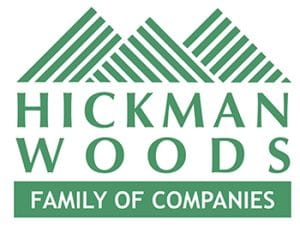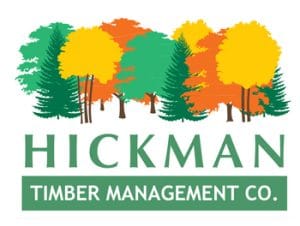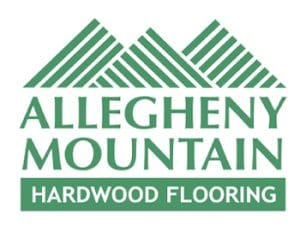Beyond FSC Certified Wood Flooring – Green Building & how to truly specify a sustainable hardwood floor for projects over 10,000 SF.
The goal of this blog is to take you beyond FSC Certified and consider other aspects of the manufacturing process to truly specify a sustainable hardwood floor and utilize as much of the tree as possible. This information is especially important for large projects 10,000 SF or more. This blog is full of studies and data, but to save you some time, I’ll let you know right now that the greenest flooring option is – A wood floor sourced LOCALLY from a SUSTAINABLE FOREST (FSC Certification guarantees the forest is being managed sustainably), RANDOM WIDTHS, RANDOM LENGTHS, and NATURAL GRADE. The cut (R&Q, Live Sawn, or Plain Sawn) really doesn’t make a huge difference.
First of all — wood is sustainable. Check out this blog about how timber management actually allows more trees to grow, sequestering carbon at a faster rate, and the carbon the old trees sequestered is STORED in that wood floor that will last another 100+ years in a home. Wood is a win-win-win all around.
Each tree is going to produce a variety of cuts & grades. I’ll explain why this natural, random-width floor is the most environmentally friendly option. However, rest assured, if you do like the clear floor (without knots), and you want that flooring in your house, that is OK! The trees from FSC-certified forests also make really incredible clear-grade floors. The goal of this blog is to focus more on architects & builders specifying the 10,000 SF + FSC specified wood flooring projects and understanding restrictions & time constraints.

Beyond FSC Certified Wood Flooring – How to Specify a truly green wood floor.
FSC Certified material is a great starting place for someone who is environmentally mindful looking to purchase green products for their home or specify a floor for a LEED Certified project or meet Living Building standards. However, if you are truly genuine about being green, minimizing waste, and utilizing the tree’s natural beauty there are wood flooring options that are better than others.
We often receive FSC Certified inquiries that either have the potential to be more wasteful or require extensive lead times. They want the “green” FSC stamp on the floor so they can get the LEED credits or feel okay about cutting down trees knowing that the FSC wood is sourced from a sustainable forest. For a certain price and lead time, we are typically able to provide exactly what the specifier wishes. However, we feel it’s essential to educate these decision-makers so they can make the most environmentally friendly specifications. These flooring options will often save money and still create a beautiful floor.

To create a truly green wood floor you should utilize as much of the tree as possible.
The goal of this blog is to create an understanding of an “average tree” and the mix of grain & grades this average tree produces. This is very hard to do because every tree is so unique, within there lies the beauty of natural hardwood. Each tree is going to produce a variety of cuts and grades. I’m going to explain why a random width natural grade is the best option to utilize each tree.
We did a study of 90 Large White Oak Logs that went through the mill. The average diameter was 20.5″. The majority of these were quarter sawn, Hickman Lumber is unique that we specialize in cutting quarter sawn. Here are the results of the mix of lumber after cutting:
Total Board Footage: 14,102 BF
An Average Tree…. figure 4 logs at 10’ / tree. (logs typically 8’ – 14’)
20” – tree diameter
Produces: 625 BF of Green (not dry) lumber – 156 BF / LOG
26% of lumber are uppers (FAS / Select)
74% – of lumber – #1, #2, #3 com.
Various cut mix: Click here to read understand the different cuts
Plain Sawn (7%) & Rift and Quarter Sawn (93%). 26% of this was the premium R&Q FAS Grade. 30% R&Q #1 Com – 37% R&Q 2&3 Com.
| RQ – S&B | RQ – #1Com | RQ – #2 Com | RQ – #3 Com |
| 3721 BF – 26% | 4292 BF – 30% | 2976 BF – 22% | 2161 BF – 15% |
Click here to understand the lumber grading rules on NHLA website.
YEILD LOSS from drying & milling floor:
Throughout the production that 625 BF of lumber (from “1 tree”) is reduced to 402 SF of flooring per tree. There is about 8% loss in drying the green lumber, then there is 20-30% “loss” in manufacturing the lumber into hardwood flooring. Note: the waste is all utilized producing wood pellets with the sawdust, sample pieces for customers, and firewood for employees’ homes. None of the “loss” is actually wasted.


Part 2 of the Study: Flooring Plant Yield: Width, grade & length yield
Example Specification: 10,000 SF 4″ Clear Rift & Quarter Sawn White Oak – FSC Certified
1 kiln of 80,000 BF Rift & Quarter Sawn Lumber – approximately 137 Trees – creates 57,230 SF flooring
Example Spec: 10,000 SF 4” Clear Rift & Quarter Sawn White Oak Nested Bundles 1’-7’
In the process of making 56,230 SF of flooring, we were only able to produce 3509 SF of material to match this common spec. That’s around 6%.
There are 3 production options to make this specification of 10,000 SF of Clear R&Q White Oak – NB
- We run enough lumber to accumulate all 10,000 SF in 4”.
- 3 times what we used in this study. We’d need to run 170,000 SF of flooring
- Over 400 trees needed.
- Change the spec to include the long length material.
- Run twice as much flooring – 112,460 SF
- Approximately 350 trees
- Rip the 5” material down to 4”.
- Run approximately twice as much flooring – 112,460 SF
- Increasing the waste factor to an additional 20% from the 5” ripped loss.
- Approximately 350 trees.

Ideally we will go with option #1 – running enough lumber to accumulate all the 4″ without wasting any lumber or changing the specification. This is very possible, but it will take a lot of time.
We will need to run approximately 112,460 SF of flooring – which is about 229,500 BF of Lumber – which is approximately 400 large trees.
Remember – we are growing more trees than we cut about 2-3 times as many trees. This is why purchasing FSC certified material is important because you have 3rd party verification of the sustainability of the forests! Read more about our management here.






Note – New blog coming soon on these museums. Half of these floors are solid RQ Red Oak and the other half are rift only white oak which cost over 3 times as much. The museum that listened to us did red oak and did rooms width different widths to help the cost. Mostly 4″ but had widths up to 10″. Can you tell the difference between the red oak and the white oak? The museum with the red oak spent over $100 K less on the floor with similar square footage!
PRODUCTION TIME: FSC Certified Flooring – From the Forest to Your Floor
Growing the trees
– 60 – 200 YEARS to reach a mature size large enough to quarter sawn.
SAWMILL TIME –5 MONTHS – 12 MONTHS
Cutting Lumber – Sawmill – Monthly Average: 350,000 BF
(this may take several months to accumulate this many large trees to quarter saw)
Drying Lumber – airdry / kiln dry. Fastest possible option to dry: to place the RQ lumber directly into dry kilns totally green (not dry). The moisture content when green is around 80%. We dry it down to 6% MC. This will take around 2 months to dry in the kiln. We prefer not to put the lumber in the kilns until after they spend some time air drying. The lumber is on stick to air dry potentially for months before going into the kilns.
Kilns: We have 6 kilns varying in size from 40,000 BF – 80,000 BF. 2 kilns are 80,000, so this will take minimum of 3 full kiln charges to dry 229,500 BF of RQ lumber. The fastest we’d have all the lumber dried then is a little over 4 months from the time we cut the logs.
Grading Lumber – when the lumber finishes drying, we will need to grade it.
2 packs an hour – approximately 3000 BF / hour. — almost 120 Hours of grading lumber. 1 – 2 months until the lumber is finished being graded and sent to the flooring plant.
Time at Flooring Plant
Ripping Lumber, running molder, end match and packaging lumber into flooring:
Monthly average: 80,000 SF of flooring.
Daily Average: 3,750 SF of flooring
Over 2 months to run 170,000 SF of flooring.
White Oak R&Q Clear Nested Bundles 1′-7′ FSC Certified
To complete the spec of 10,000 SF 4” Clear RQ White Oak Nested Bundles 1’-7’ we could need at least 7 months, possibly longer.
Compare that to using a random width 3,4,5 option. Mixing lengths 1’ – 12’ or standard 1’-7’ Nested Bundles we could get that out of one kiln charge. It may even be something we have in stock. Lead time decreases to 2-3 months worst case scenario, and you are utilizing more of each tree.
Now if you use mix grades along with the random width that lead time decreases even more and you use even more of the tree!
Hopefully this provides a better understanding of the production side of FSC Certified Wood Flooring. Now we make a ton of natural grade flooring, mostly for homes. I’ve yet to do one in a major museum, and that’s ok, but I’m trying to help educate on options! Here’s a wide plank random width, white oak live sawn at Happy Valley Brewery in State College.

White Oak – Live Sawn – Random Width – Circle Sawn – Happy Valley Brewing
SEE MORE PHOTOS – White Oak Live Sawn – Red Oak Live Sawn
Allegheny Mountain Hardwood Flooring can create the most beautiful museum quality clear Rift & Quarter Sawn flooring. We have had our clear grade in museums across the country, government buildings in Washington DC, including the Supreme Court, offices in Congress and the White House, the Library of Congress, and the Vice President’s mansion. When the job requires the top quality, we are the resource of choice among the top builders & installers in the country, but it is important to allow for production time. If your priority is to specify a green floor and utilize the tree. Consider doing a random width natural grade. Another benefit of using a natural grade wood floor… it is less expensive!

Green building and wood flooring should be synonymous. Wood Floors last 100+ years, they are carbon negative, and they are made from a very sustainable resource. Purchase FSC Certified Flooring to be sure it’s sourced from a properly managed forest. You can get the floor of your design dreams, please just give us a enough time to make it.































